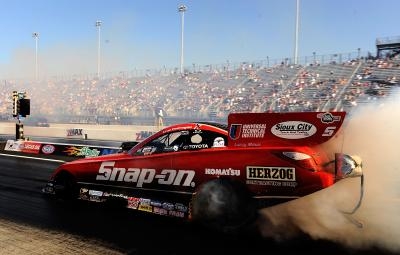
Independent rear suspensions aren't new, but they still haven't quite overtaken the solid ("live") axle the way some predicted decades ago. It would be easy to dismiss live axle proponents as automotive Luddites, their arguments more of a sour grapes justification than anything truly substantive. However, as we'll see, the old metal beam still has a place in today's automotive world.
Axles come in two varieties: the non-driven or "dead" axle, or the driven or "live" axle. A live axle links the left and right wheels together with a solid beam, meaning that movement on one wheel affects the other. In an independent suspension, the drive wheels can move up and down independently, without one affecting the other. Independents suspensions require two short, flexible driveshafts to transmit power from the center differential to the wheels.
Live axles have two major drawbacks. The first is that movement on one side of the car may not enhance traction on the other. Imagine this scenario: While going around a left-hand curve, weight transfers from the left (inside) wheel to the right (outside) wheel. If that left-side (unloaded) wheel happens to hit a dip in the pavement, it will drop and force the right (loaded) side to go up. This results in a weight transfer to the inside tire, which doesn't contribute as much to traction as the outside. The result is a tendency to lose traction over rough surfaces while cornering. The independent suspension doesn't have this problem, which makes it the suspension of choice for road or rally racing.
Unsprung weight is a double-edge sword for both suspension types, as it can help or hinder, depending on the situation. Unsprung weight refers to that portion of the suspension not supported by the springs, and effectively represents uncontrolled or "dead" weight on the road. Wheels, tires, wheel hubs and control arms are unsprung on both types, but the live axle adds a lot more weight in the form of a center differential. Lower unsprung weight allows the suspension to more quickly respond to road imperfections, moving up and down unhindered by excess inertia. However, that dead weight resting on the tires can help to push them into the ground for enhanced straight-line traction. So, live axles have the advantage in drag racing; independent suspension have it everywhere else.
The live axle's ability to transfer load from one side to the other may hurt it at high speeds, but its absolutely ideal for traction at low speeds over rough terrain. Rock-crawling buggies don't spend much time with all four wheels in contact with terra firma; in three-wheel circumstances, an independent suspension would flex and try to send weight back to the dangling wheel instead of placing all of it squarely on one tire. Independent suspensions are far superior to live axles in high-speed off-road rally or Baja racing, but they lose out to live axles in the rough stuff.
The independent suspension's inherent flexibility and lower unsprung weight mean that manufacturers can control suspension movement without resorting to the very stiff springs and shocks that they'd need for a live axle setup. While independent systems don't have any natural advantages where ride comfort is concerned, their softer springs and shocks make them the more ideal choice where ride comfort is concerned.